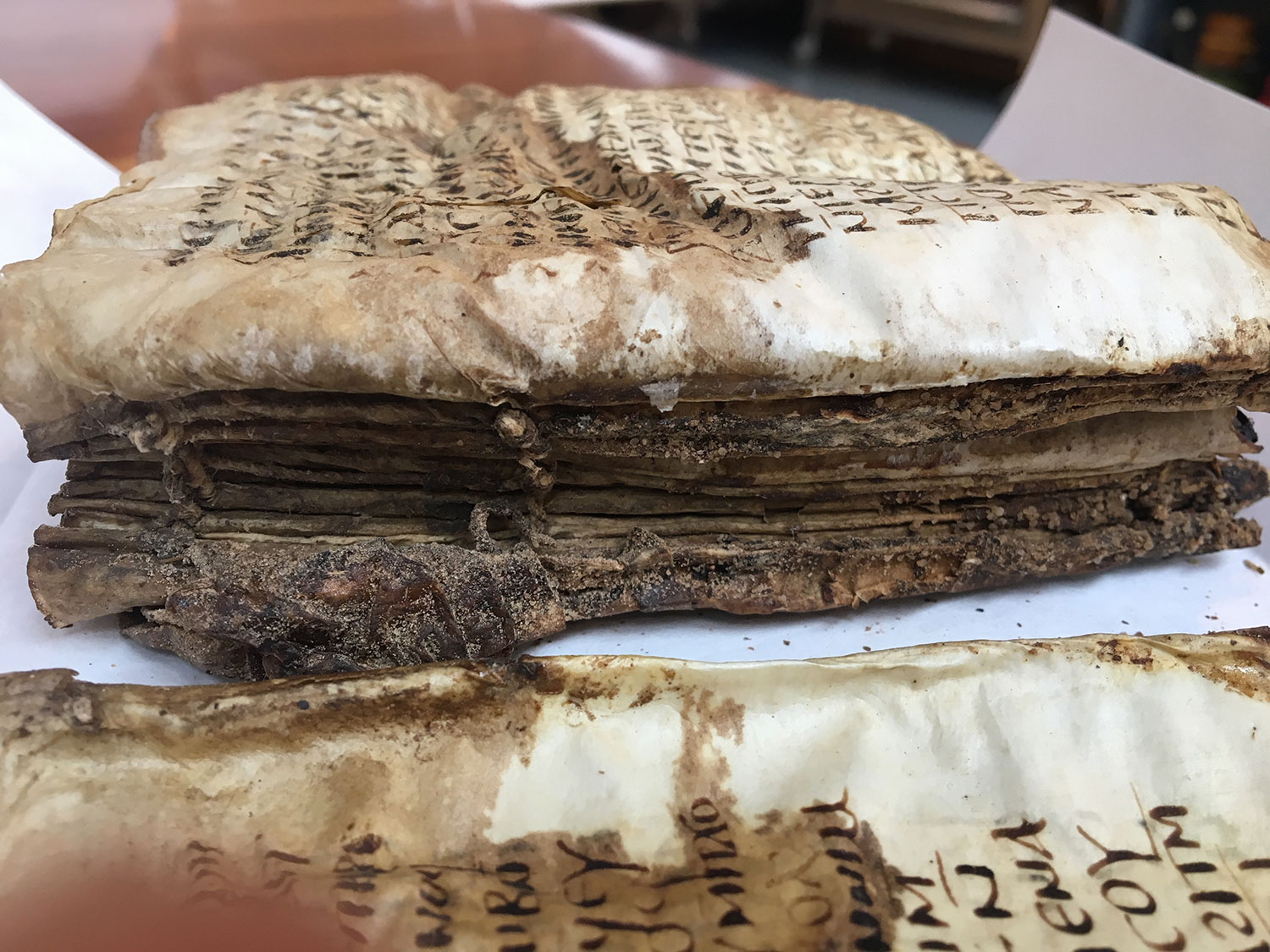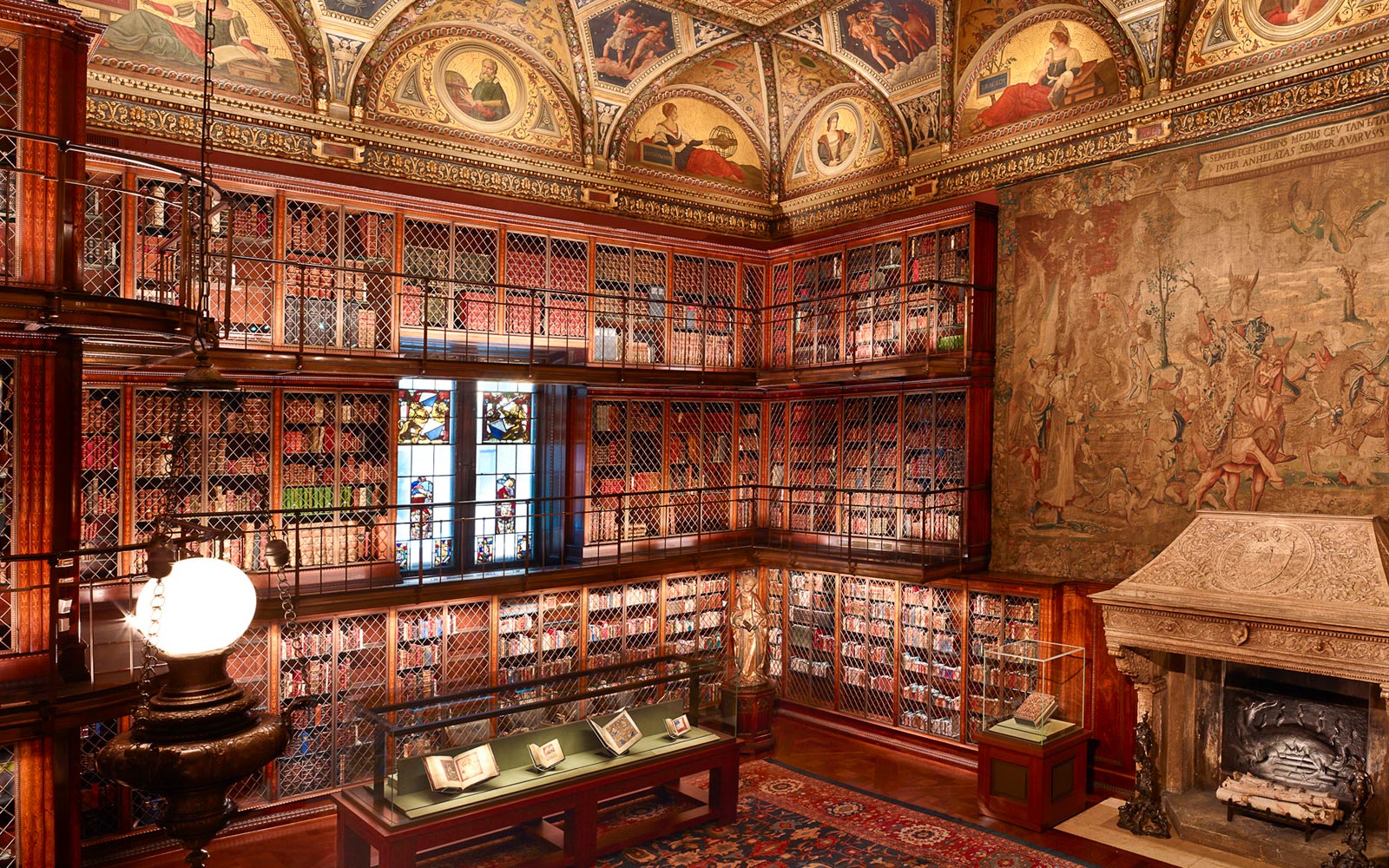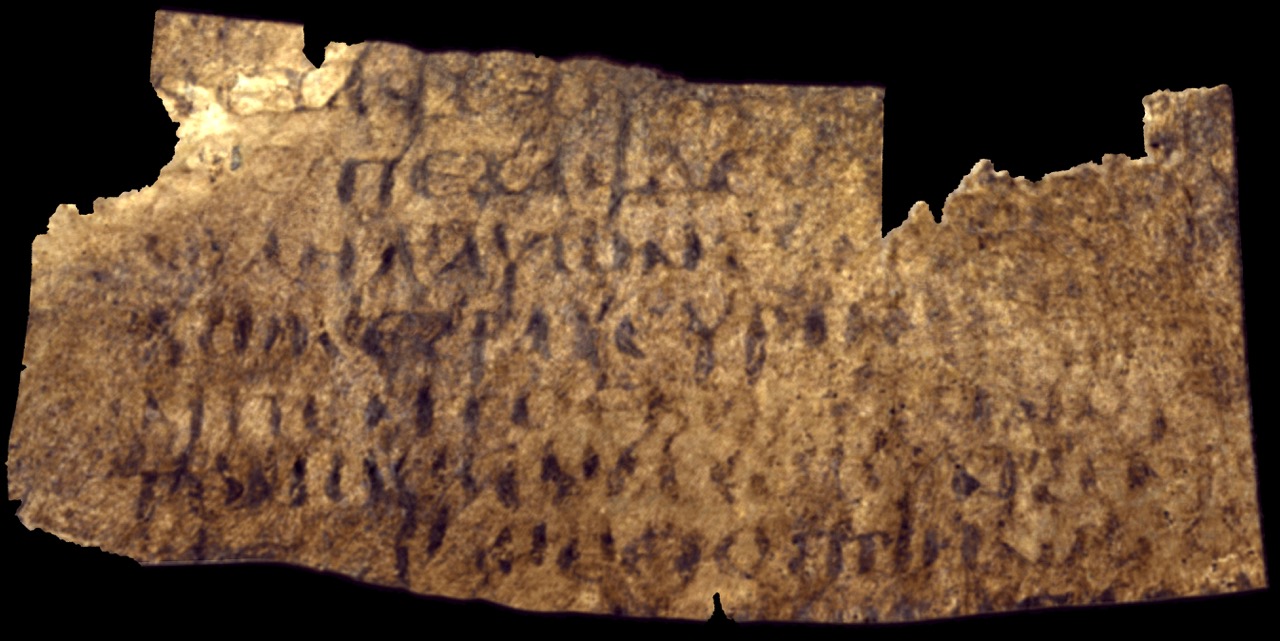This 100 page parchment codex contains one of the earliest full copies of the Acts of the Apostles in any language. Only one page is readable. Its other contents remain a complete mystery, due to its charred, extremely fragile condition. The other contents may represent different readings or textual variations from the English versions of the Bible, or they may be from other writings entirely. This manuscript presents an interesting virtual unwrapping challenge due to the extremely thin parchment, which makes is difficult to isolate the writing surfaces in the tomography, plus the fact that writing appears on both the recto and verso side of each page. The manuscript was scanned in December of 2017 and November of 2018, and work continues in the lab to reveal its contents.
Another interesting feature of the manuscript is its exquisite binding, which has been preserved in fragmentary form, including the sewing threads, two wooden boards, a leather spine piece and evidence of wrapping bands. Its features are consistent with Coptic wooden board bindings of the 4th and 5th centuries. Only a small number of Coptic bindings from this era survive. The fragments of the binding thus provide a significant view into the earliest methods of binding the codex book form that is familiar today. These images of the manuscript in its bound form will allow confirmation of internal binding features, and also obviate the need to interfere with any of the original binding features to make the text accessible to scholars




